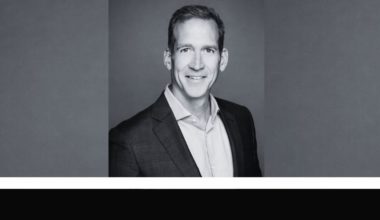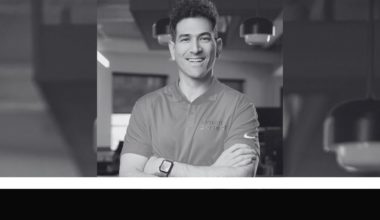User-generated video platform Clipchamp lets users easily record, customize and share videos. The team have developed their own proprietary video compression technology to process video in the fastest times.
To fans of Silicon Valley’s Pied Piper this story may well ring a bell, the team is frequently compared to the HBO comedy. However, Clipchamp’s technology is no mystic algorithm. Here CEO and founder Alexander Dreiling describes the team’s journey, and the company’s unique solution to video compression.
Please tell us a little bit about your company – what is Clipchamp all about?
Clipchamp have created the world’s first browser-based, user-side video compression and conversion technology. What does this mean? Well, it means we compress video that people are trying to upload to Facebook, YouTube and other cloud storage facilities before it leaves their computer, without them needing to download any additional software. This means it can upload video up to 20 times faster and arrive at the destination in whatever format is required. We have a free version which anyone can use, and we have a paid API that is available for website owners to implement on their own websites if they want to receive video from their visitors.
Tell us a little bit about your background and how you started your company?
There are four founders who met and all worked together at SAP across both Australia and Germany. We had some pretty big ideas about creating the world’s first distributed zetta-flop supercomputer, but soon we realised that was going to be nearly impossible as a small start-up. However, one of the by-products of our early work was our video compression tool and so we decided it would be a great idea to commercialize that. Our company has been around since February 2013 but Clipchamp wasn’t launched until August 2014. We’ve come a long way in that time and have some fantastic momentum moving forward with over 300,000 people using our product every month.
What are some of the projects you are working on right now?
At the moment we’re streamlining the implementation of our API, working on new products, integrating a new automated marketing system into the site and redesigning the user experience to encourage more sign-ups and a greater awareness of the API. But there’s a list as long as our arm for other ideas to implement. Just not enough time to do everything!
What are your plans for the future, how do you plan to grow this company?
There are a number of ways for us to grow the company. The first, obviously, is with more API users. Secondly, we plan on developing a premium product for our everyday users. And finally, there are other products we feel could pivot out of our technology. The danger is to remain focused and not be distracted by every possibility that comes along, but also not to discard them all out of hand.
How do you bring ideas to life?
The Clipchamp team is pretty close, we have known each other for a long time, so the manner in which we develop ideas is pretty fluid. Some decisions are made by individuals and sometimes we workshop ideas and look for group consensus to move forward. We have different people with different skill sets, so it’s important to try and take input from everyone.
We also have two of the team in Germany. They are working in a completely different context, in contrast with the Australia-based team, and as a result they tend to come up with a number of different ideas as well. Their advantage is that they can implement them without distraction as they work when the rest of the team is sleeping.
What’s one trend that really excites you?
Obviously the growth in video is something that excites us. In Wyzowl’s survey: The State of Video Marketing 2016, 77 percent of consumers say they’ve been convinced to buy a product or service by watching a video. That’s a huge opportunity for us. While internet speeds are getting better, compression technology is really where online video will expand from. We want sending and submitting video to be as natural as sending and submitting an email.
What were the top 3 mistakes you made starting your business and what did you learn from it?
- We really had development and admin under control from the beginning, but focused less on marketing. It wasn’t all bad, as we built products that marketed themselves, but with marketing we would have grown faster. Today we have learned to better market our new products.
- Our original vision was too large, we had no feeling for what might be achievable for a startup, as they founding team came from a background of large organizations. We invested quite a bit of money and time before we realized we needed to pivot and focus on something that we could actually achieve. We have gotten much more careful about what we invest our time and money in now.
- Dealing with the wrong people. In the past, we wanted too much at times, we have since realized that unless there is a great connection from the first interaction, we shouldn’t waste our time.
How do you go about marketing your business, and what has been the most successful form of marketing for you?
It’s funny as there has been relatively little marketing done so far. Sure, we have a website but we haven’t done much to connect to the end user. Much of our growth has come from our position in the Chrome store and the awesome ratings we get there. SEO has also been good to us; we’re ranked highly for some important keywords – phrases like ‘video compression’ and ‘video compression online’ – and that has boosted us massively.
However, we have big marketing plans for the rest of this year. We’ll focus on SEO still, especially through content creation, but introduce PPC and social advertising. We’ll also try and engage with users, both consumers and business on a face-to-face basis too at events and expos. Additionally, we have two people working on outreach, talking to CEOs and CTOs in key businesses that we feel could utilize our technology in the right channels. On top of that, we’re adding a marketing automation platform into the mix; with a potential user base of over 1 million by the end of 2016, we need to do what we can to be in constant contact with them.
What would you say are the top 3 skills needed to be a successful entrepreneur – and why?
Flexibility, strategic thinking and focus.
Flexibility is important with both how your product develops and how you deal with your team. With all startups there’s an element of you flying by the seat of your pants and making up some of it as you go along. You have to maintain your flexibility in that sort of environment. Remaining strategic is often seen as the antithesis of that flexibility, but it’s not. You have to keep a strategic vision at the forefront of what you’re doing otherwise you can easily get lost. And that’s where the focus fits in. As I mentioned before, it’s important not to dismiss any ideas, but focusing on what needs to be delivered now will make sure you don’t get distracted.
What are the top 3 online tools and resources you’re currently using to grow your company?
For our marketing automation and CRM we use Sharpspring, for project management we’re using Asana, and to help develop campaign landing pages, we’re using Unbounce.
What are three books you recommend entrepreneurs to read?
- – Jared Diamond: Collapse
- – Eric Ries: The Lean Startup
- – Patrick Lencioni: The Five Dysfunctions of a Team: A Leadership Fable
What is your favorite entrepreneurship quote?
“A journey of a thousand miles begins with a single step”
– Lao Tzu
How can our community get in touch with you?
You can find us on LinkedIn, Twitter or Clipchamp on Facebook. Or alternatively, reach me at alex @clipchamp.com.
Related: Thomas Gentle CEO of Shotcall: Play On. Play Hard. Play Together








